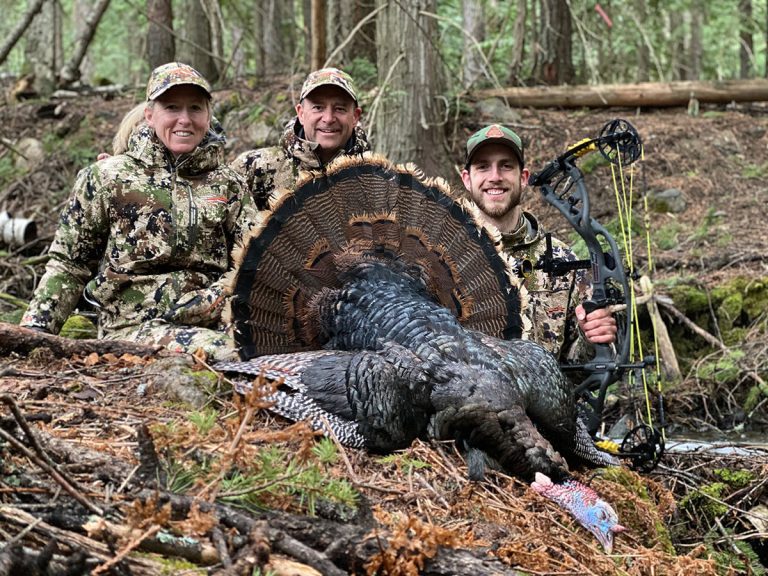With turkey hunting, tenacity usually pays off, and it did. It was only a matter of time before we fired up a mid-mountain gobbler. Following 45 tense minutes of coaxing, he emerged from cover. Breaking from the trees, he immediately noticed our decoys, raced in, and began to strut. Positioned 20-yards apart, each hiding behind a massive pine tree, my wife and I both drew our bows the moment the gobbler fanned and turned to face away. At 18-yards, he was instantly greeted with a broadhead through the living room. Heather’s arrow launched first, and with a single hop, it was lights out as he tumbled down the steep hillside. In an instant, the woods were still and all previously humbling interactions faded as distant memories. Four days, and plenty of elevation finally paid off as Heather raced over and proudly hoisted her bird into the air!
Returning home from this hunt, I was reminded of both the challenge and exhilaration of outsmarting these mostly-elusive birds. ‘Running and gunning’, much like we do hunting elk – in other words calling, hiking, and climbing – as we hunt Merriam’s, we generally cover many miles and plenty of elevation in search of a willing Tom. Most days we get into turkeys, and killing birds with a shotgun would rarely be an issue, but bowhunting them, especially on foot, is a different game altogether. On that particular hunt, unseasonable heat and the timing of our trip seemed to subdue the birds over our first three days. Most hens were already tending eggs, and the gobblers were mostly locked up with the hens that were still roaming. On day four though, things turned on. In the pre-dawn darkness, a few subtle purrs, clucks, and yelps triggered a gobbling frenzy. With a new lease on life, we called several Toms to within archery range, but as bowhunting – and more specifically turkey hunting – goes, the keen eyes and hyper-awareness of these peculiar birds, foiled set after set.
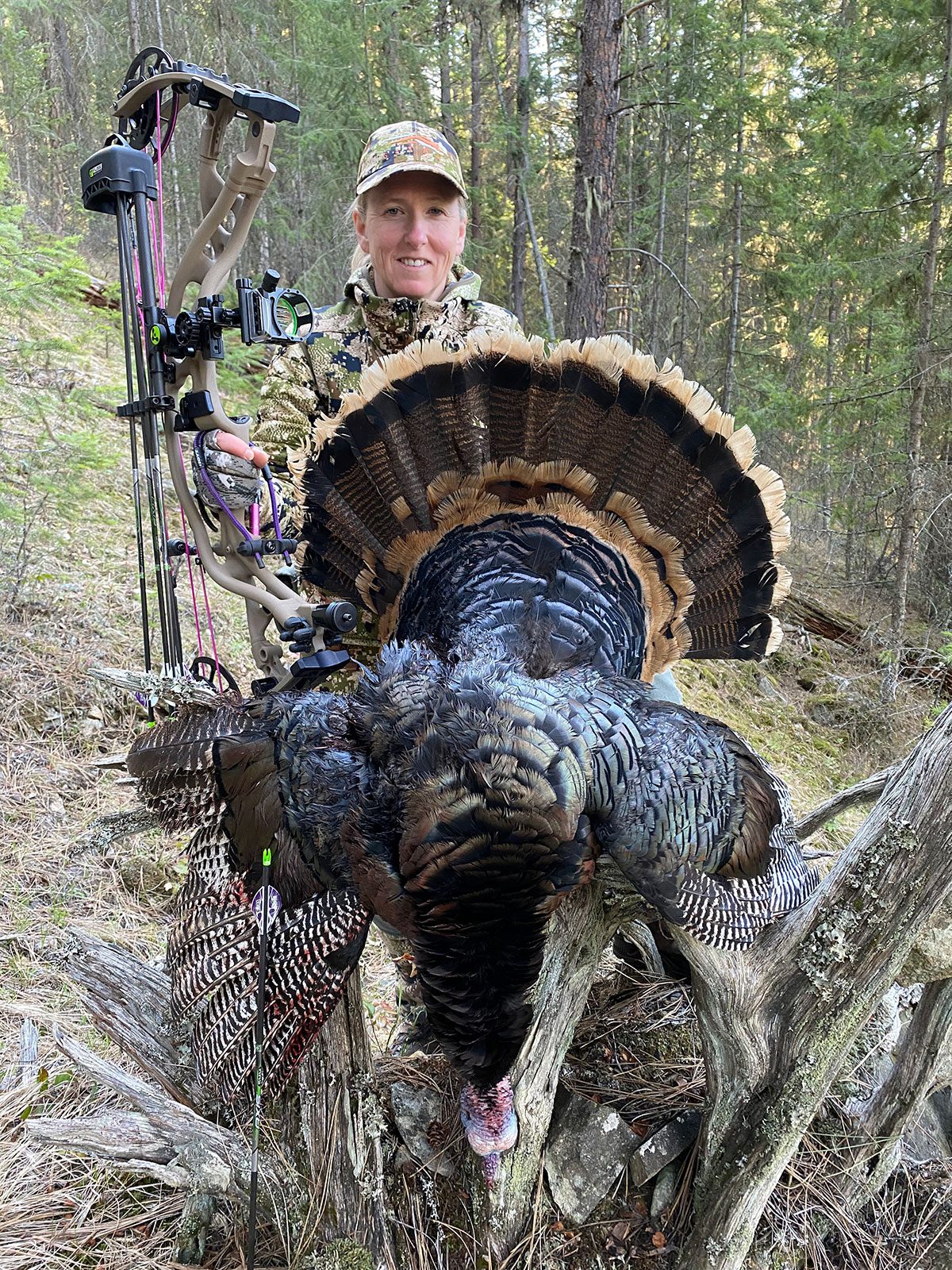
If you’re more accustomed to hunting turkeys with a gun, but want to give it a go with a bow, allow me to offer a few quick tips for gearing up and setting up. Even if you’re a seasoned bowhunter in the turkey woods, I trust some of what I’m about to share will add to your pre-existing arsenal.
People often say turkeys are smart, and therefore tough to hunt. Indeed, they can school even the most veteran of hunters, but after 28 years in the turkey woods, I offer Instead that wild turkeys simply have extraordinary eyesight, and that they are perhaps better described as schizophrenic. And, honestly, that’s what makes them so much fun to hunt!
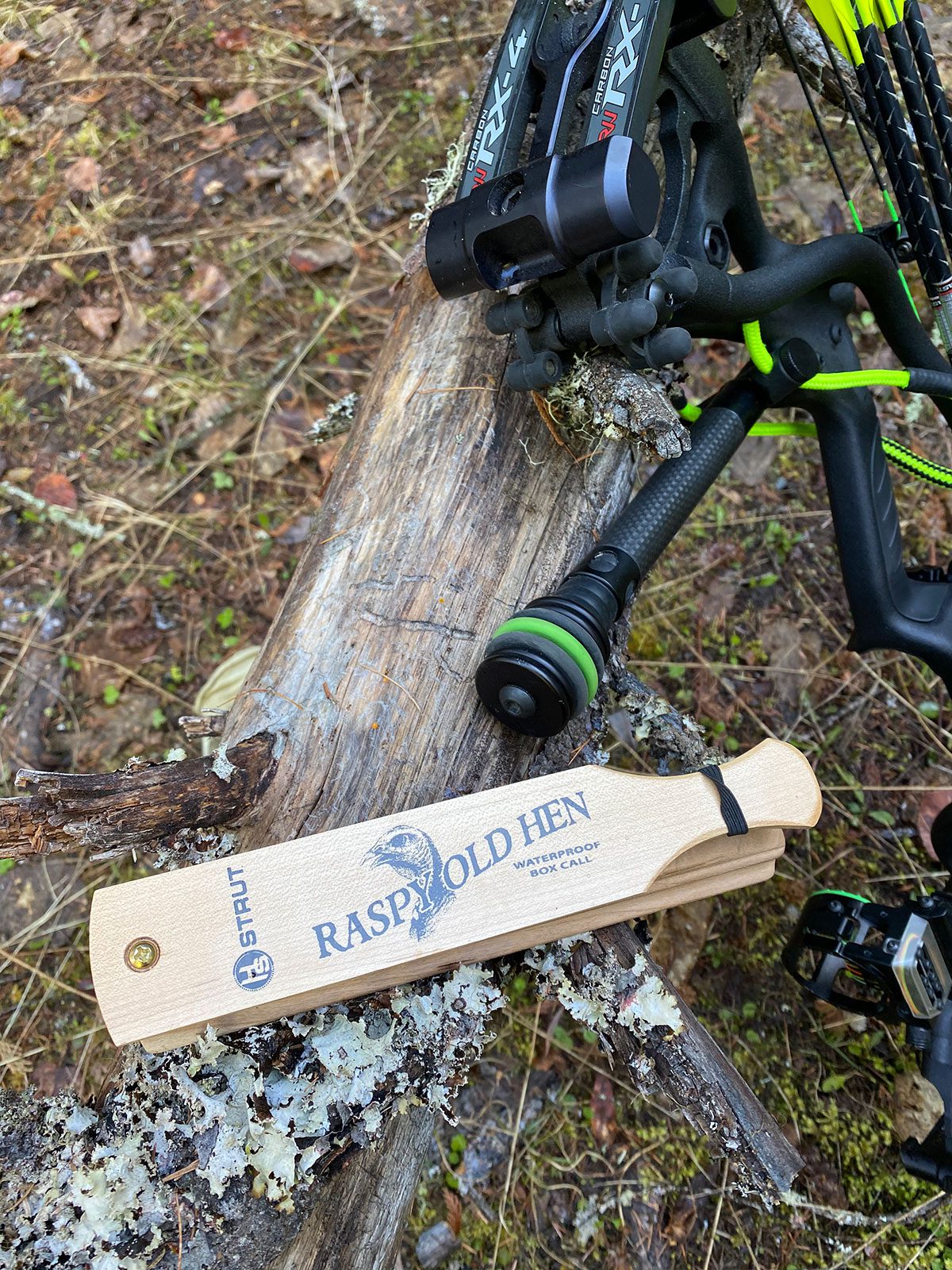
Gear Considerations
Each spring’s annual turkey hunting marathon gives me a refresher course in finding birds, getting in close, placing decoys, calling, and of course shot placement. As far as archery shots are concerned, know that a turkey’s kill zone is a small target. For this reason, accuracy and precision matters. First and foremost, make sure your bow and arrows are dialed in for accuracy. Many bowhunters leave their archery equipment alone over the winter. This is never a good idea. Consistent practice will most often translate to success in the field when you’re shooting well during practice.
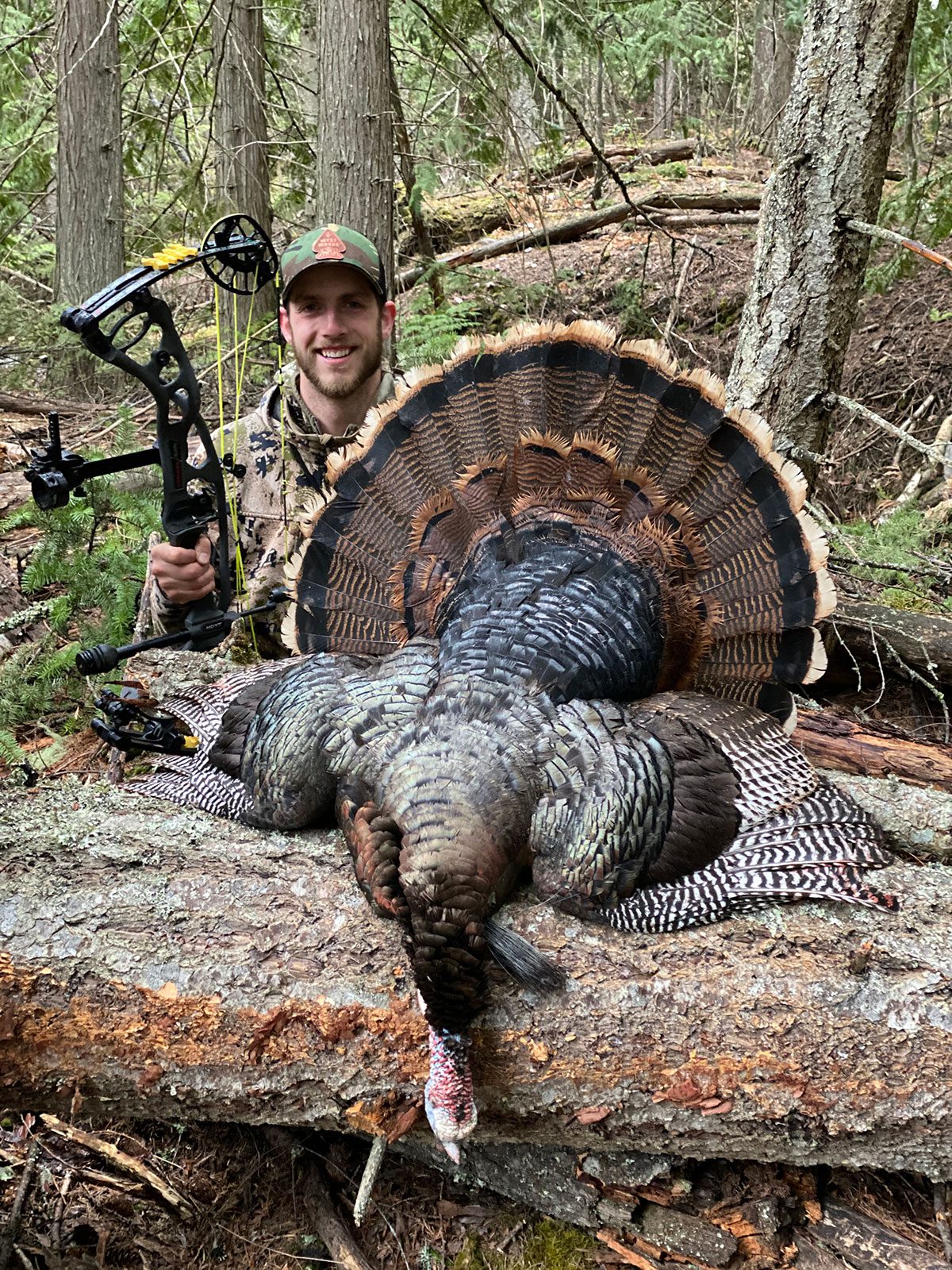
Any legal hunting bow can work for wild turkeys. More important than poundage, or even the arrow you shoot, is the broadhead you use. Many years ago, I found one that I really like and continue to use today. It’s a Fuse turkey-hunting broadhead that’s unfortunately no longer in production. I’m not sure why they stopped making them, because they work great. Soon, I’ll have to change it up, because I’ve only got two remaining in my quiver. Standard three-or-four-blade broadheads will do the trick with proper shot placement, but many bowhunters prefer using larger diameter tips like the Rage Extreme Turkey broadhead, New Archery Products Spitfire Gobbler Getter, or the Magnus Bullhead Fixed broadhead.
Decoys matter. As far as calls and decoys go, HS Strut products have always worked well for me, and I’m becoming a big fan of Avian-X turkey decoys now. The realism of their poses and detail in each decoy is remarkable. Regardless of your personal choice, realism is key. Employing a single jake along with two or three hens, tends to work well in most situations.
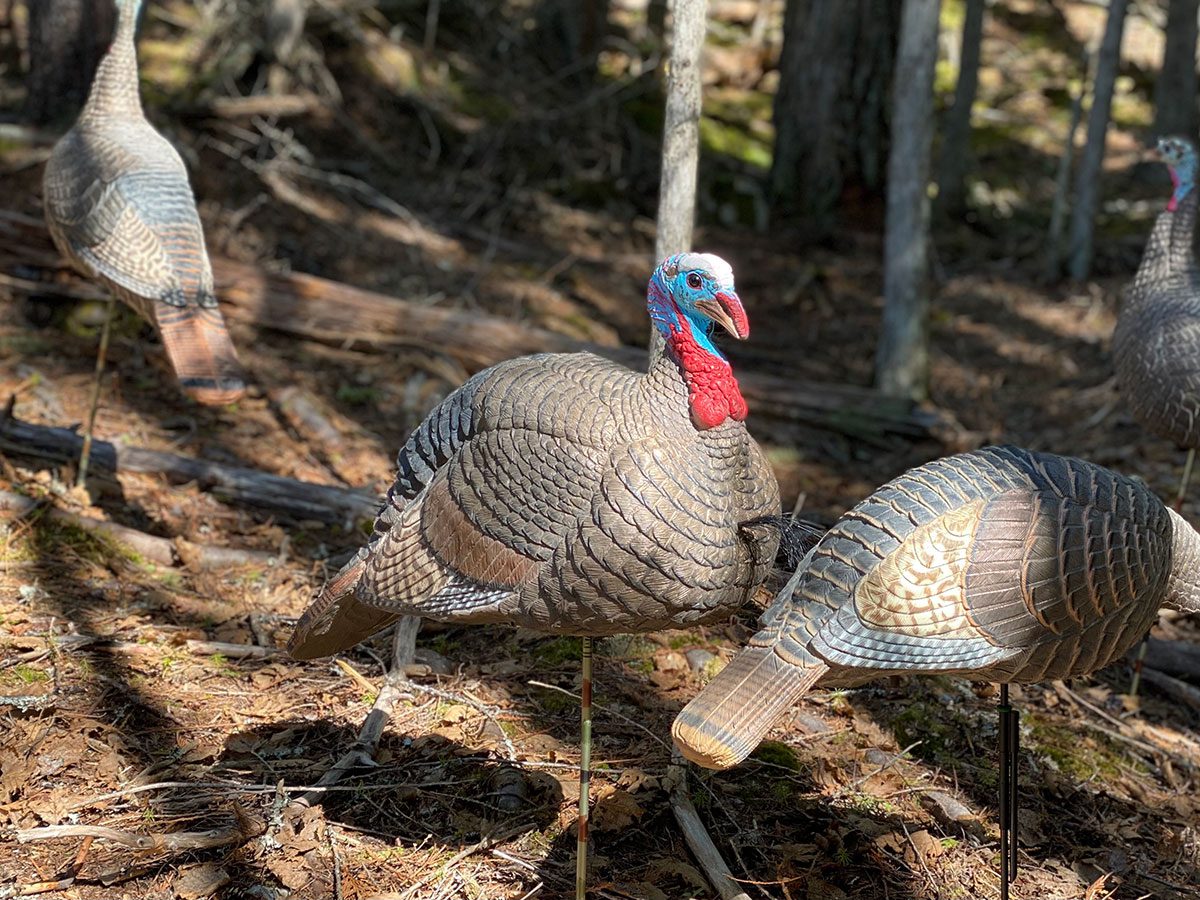
Calls & Calling
Getting a turkey to give up his location is half the battle. Diaphragm, slate, and box calls all work, but the key is in the pitch, cadence, volume, and the type of calls you use to evoke a shock gobble. Over the years, I’ve discovered an inventory of calls that work well for me including a roster of purrs, clucks, and yelps. Less is often more, as is volume, but sometimes the opposite is true. Again, much like elk hunting, when you finally get a gobbler cranked up, match his energy and you’ve got a good chance of drawing him in on a string.
I use a variety of different box calls made by HS Strut, and I have an old Lohman box call I really like as well. Each of these have brought in many birds to bow range over the years. Similarly, I have an assortment of slate and diaphragm mouth calls as well. Each has its application. More important that the type of call you choose, is learning how to use it well. As a baseline, practice developing a series of six-to-eight yelps starting with a bit quieter sound and slower cadence, then build up to a crescendo of louder and shorter yelps. When birds hang up out of range or seem reluctant to come in, adding in a few sporadic purrs and putts, clucks, and even spitting and drumming (best done with a diaphragm mouth call), can push them over the edge and draw them in closer. Once you have them gobbling and cutting off your hen calls, there’s a good chance they’ll come in. Keep them excited and vocal, and your odds of enticing them within bow range go way up.
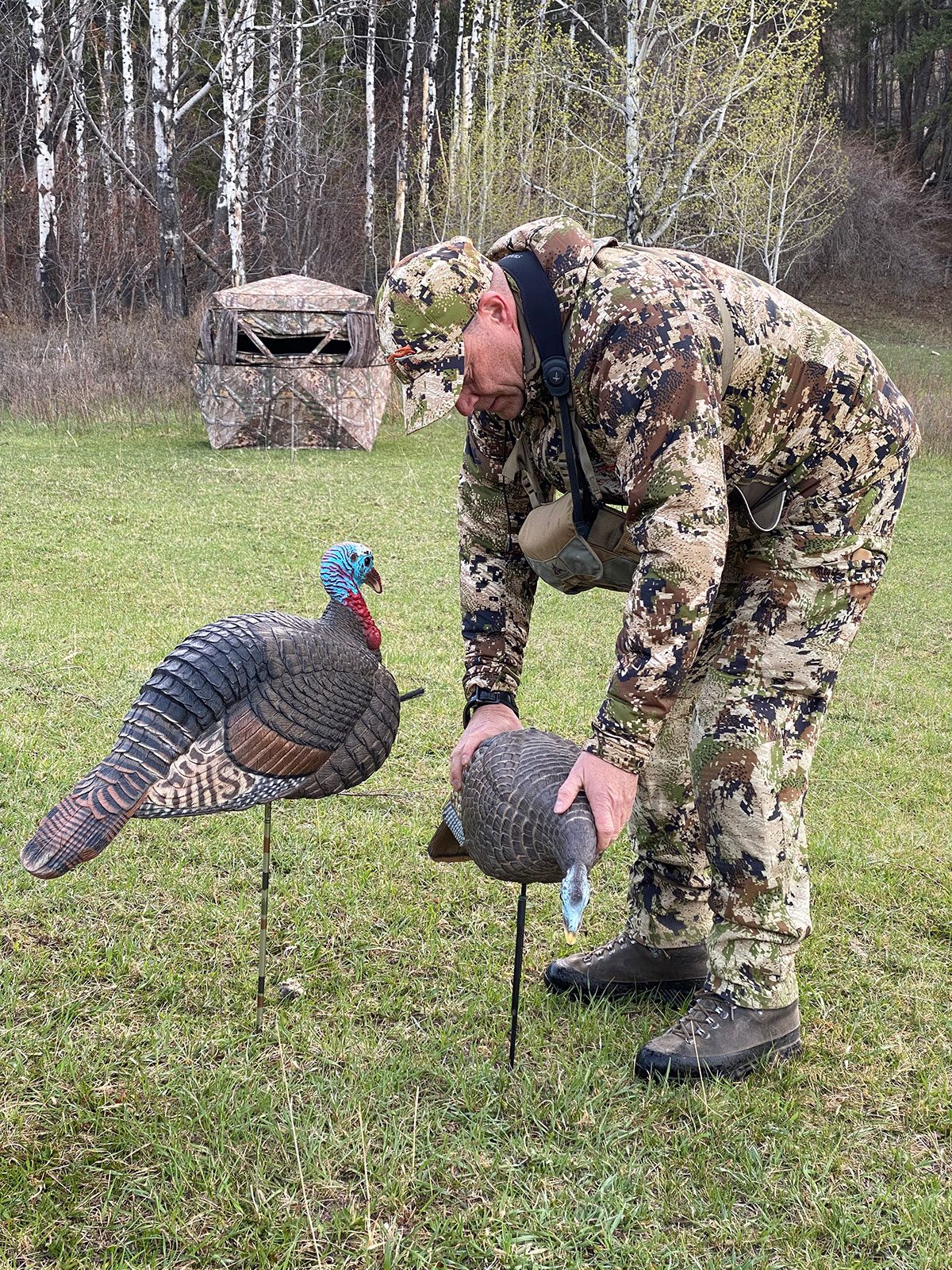
Bowhunting Strategies
How we bow hunt Merriam’s depends a lot on where we’re chasing them. Essentially, there are four main strategies that can work. These include hunting from a blind, spot and stalk hunting, walking and decoying while calling, and fanning.
Certainly, the most common method employed by bowhunters is using a pop-up blind. Generally speaking, these big upland birds aren’t blind-shy, so an inanimate hunting hide serves to conceal movement allowing archers to draw their bow undetected. Setting decoys 20-to-30 yards from the blind is a proven strategy that works well for many archers. The key here, is placing a blind in known movement areas, often open pastureland or fields where turkeys hang out and feed. Once you pinpoint a consistent lingering area, ideally within a couple hundred yards of a known roost, setting up a blind and leaving it in place for a few days, and then setting decoys and calling from the blind can be an effective strategy for drawing birds in close. Every Spring, plenty of turkeys are shot by bowhunters using portable blinds, like the Nukem Grab and Go.
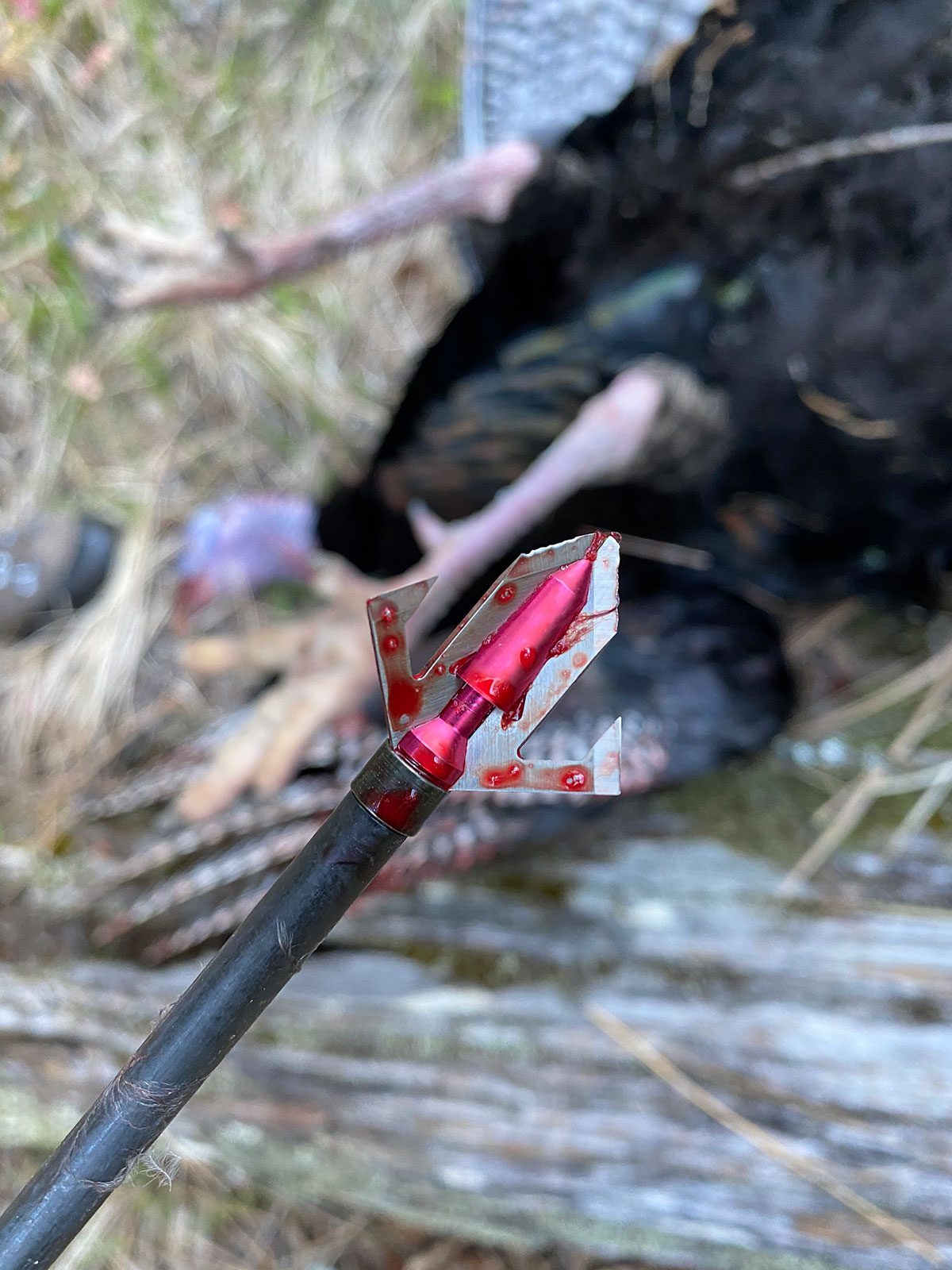
I know some bowhunters who spot and stalk turkeys with success. Much like locating and sneaking in on big game animals, the key is concealment. Using the lay of the land, trees and other cover like drainages, and of course conditions like wind to help conceal your approach can help al lot. The last time I did a spot and stalk turkey hunt, I snuck within 40 yards of three big Toms by quietly easing along a creek bottom, then popping up over the edge to take the shot.
All that said, my favourite method for bowhunting Merriam’s turkeys, is walking and setting-up with decoys and then calling. It’s a lot tougher to get an archery shot, but it’s far more exciting than sitting in a box blind. As I mentioned before, bowhunting wild turkeys is a lot like elk hunting. You often have to cover tons of ground before getting a vocal response, but when you do, it’s game on. Merriam’s generally roost high. In foothills or mountainous areas, that means up on ridges. Like other turkey sub-species, after flying down from their roost tree, they’ll work their way along those ridges or down into valleys during midday hours, then go back up to higher elevation in the evening. They may linger, feed, and breed in fields but more commonly they remain under the protection of forested cover. Once I get a response to my calls, I move in and set up.
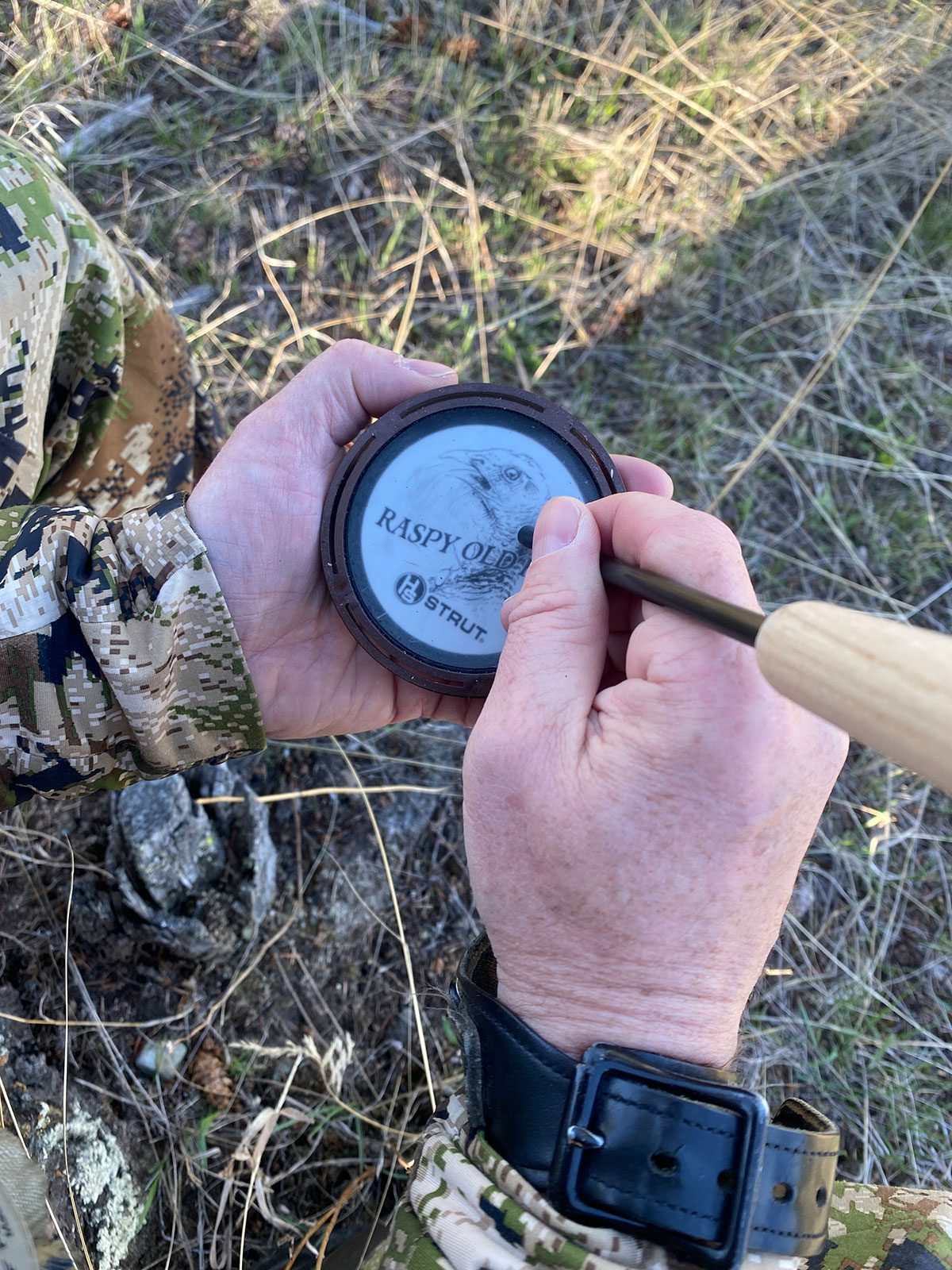
As far as set-ups go, I’m big on pushing in close. Not too close mind you, but if cover allows, I like to get within 100 yards of where I think the Tom is hanging out. This requires caution though. If he’s off the roost and fired up, moving in too close can get you busted. For archery hunting, hide behind available cover – things like big boulders, fallen timber, or bigger trees. Set your decoys 20-to-30 yards away and start calling. Place a jake decoy tight to one hen like he’s ready to mount her. Then space the other hens five or ten feet apart. Know that a possessive Tom will commonly focus on confronting the jake decoy.
Fanning is another option for getting in close to wild turkeys. This involves hiding behind a turkey fan decoy – usually a more or less one-dimensional decoy that shows the front view of a gobbler in full strut. Hiding behind it, and carefully moving in on a Tom that’s working hens or preoccupied with other gobblers, can get you within bow range. Be aware of the safety risks if there are other hunters in the area though. Once you’re within bow range, pick your time to draw and shoot based on how distracted your target bird is.

Archery Shot Placement
Turkeys have amazing eyesight and they easily pick out even the most subtle movements. Wait until the bird is strutting and, if possible, facing the opposite direction before drawing your bow. This is especially important when you’re hiding behind something. In all situations, suitable camo clothing, including a facemask and gloves, helps a lot with concealment. Blending in with your surroundings never hurts.

Remember, what you see when you looking at a turkey is mostly feathers – especially a Tom in full strut. The actual kill-zone is relatively small. Your goal is precise shot placement. Take time to browse the internet to study arrow placement for wild turkeys. Memorize where to shoot if the bird is facing you, standing broadside, and if it is facing away (especially if its strutting). With all those feathers, understanding anatomy will help you properly focus on lethal shot placement. Full disclosure – like many of us, I’ve been there – pillow casing a Tom, leaving nothing more than a pile of feathers on the ground, because I misjudged shot placement.
In the end, know that bowhunting wild turkeys is a challenge. Prepare properly, choose and use equipment that works, practice a lot prior to your hunt, and success will follow.
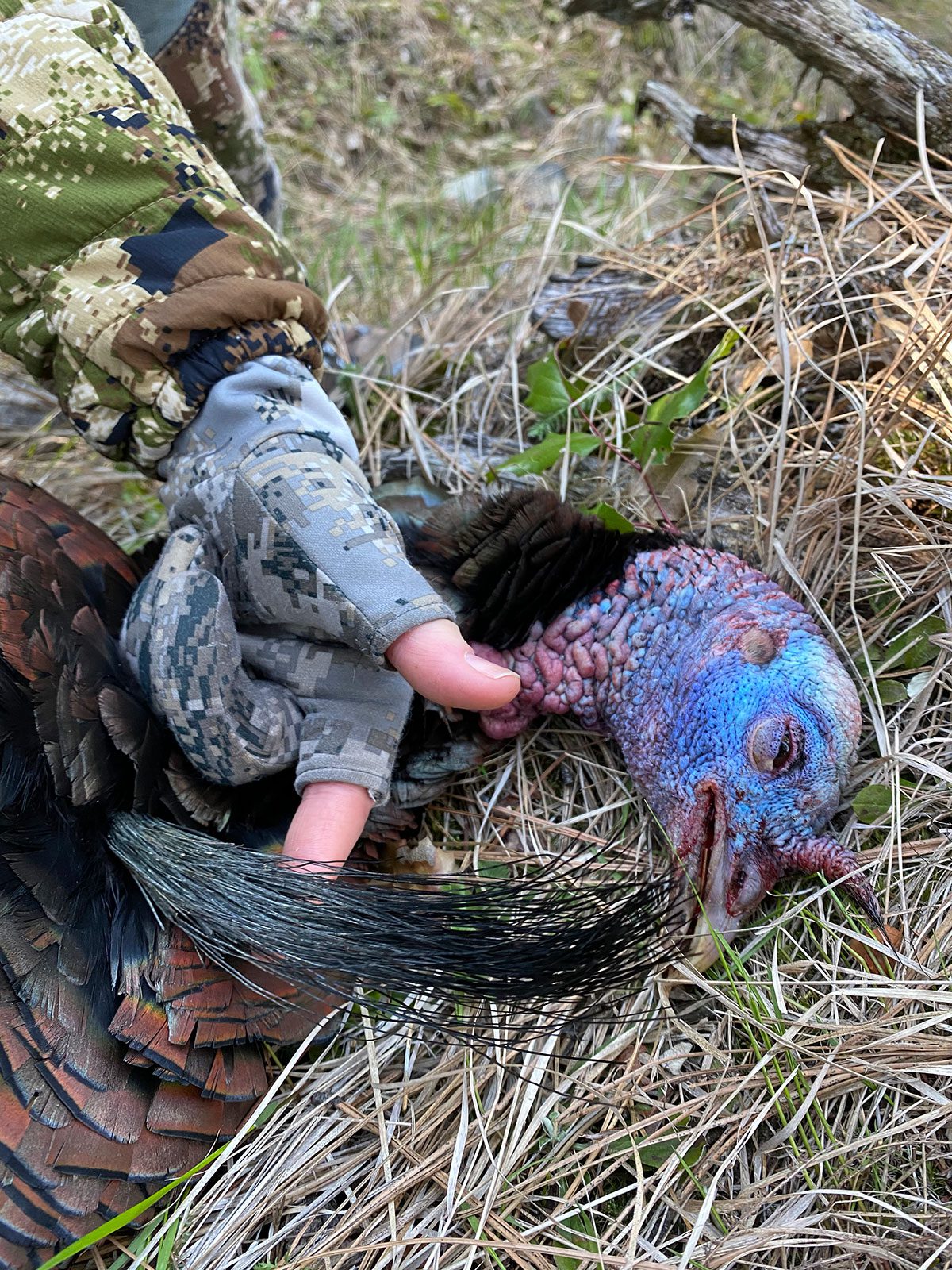
Per our affiliate disclosure, we may earn revenue from the products available on this page. To learn more about how we test gear, click here.





